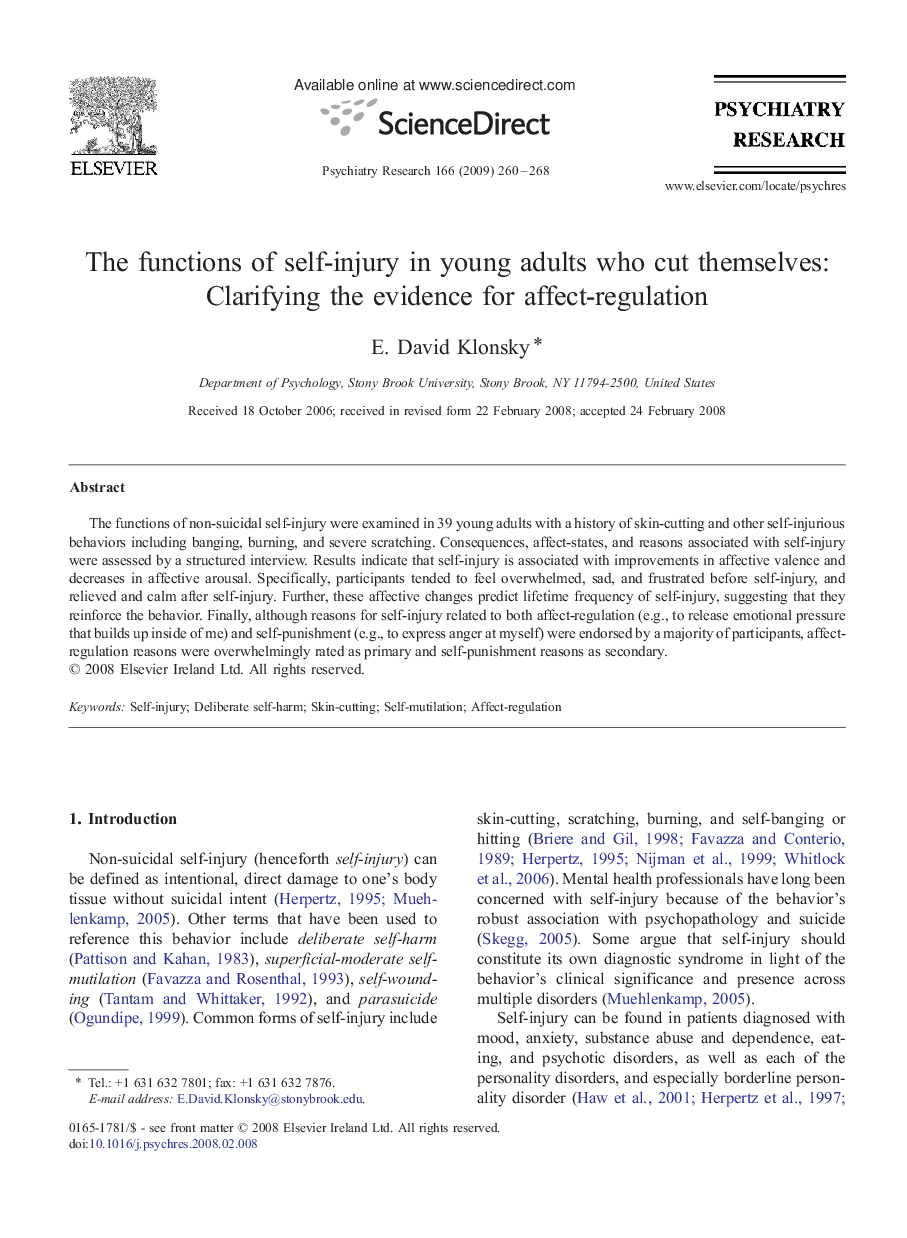| کد مقاله | کد نشریه | سال انتشار | مقاله انگلیسی | نسخه تمام متن |
|---|---|---|---|---|
| 334224 | 546025 | 2009 | 9 صفحه PDF | دانلود رایگان |

The functions of non-suicidal self-injury were examined in 39 young adults with a history of skin-cutting and other self-injurious behaviors including banging, burning, and severe scratching. Consequences, affect-states, and reasons associated with self-injury were assessed by a structured interview. Results indicate that self-injury is associated with improvements in affective valence and decreases in affective arousal. Specifically, participants tended to feel overwhelmed, sad, and frustrated before self-injury, and relieved and calm after self-injury. Further, these affective changes predict lifetime frequency of self-injury, suggesting that they reinforce the behavior. Finally, although reasons for self-injury related to both affect-regulation (e.g., to release emotional pressure that builds up inside of me) and self-punishment (e.g., to express anger at myself) were endorsed by a majority of participants, affect-regulation reasons were overwhelmingly rated as primary and self-punishment reasons as secondary.
Journal: Psychiatry Research - Volume 166, Issues 2–3, 30 April 2009, Pages 260–268